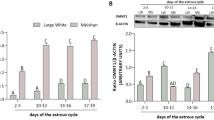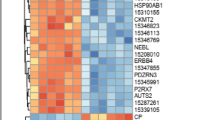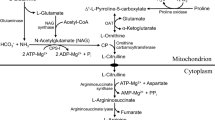Abstract
The present study was designed to investigate the effects of various cadmium concentrations on porcine growth hormone (GH) secretion in serum and cultured pituitary cells and to explore the possible mechanisms of cadmium toxicity. In feeding trial, 192 barrows (Duroc × Landrace × Yorkshire), with similar initial body weights, were randomly divided into four different treatment groups with three replicates for each treatment. The diets were supplemented for 83 days with 0, 0.5, 5.0, and 10.0 mg/kg cadmium (as CdCl2). For the cell culture trial, dispersed pituitary cells were incubated with graded doses of cadmium (0, 5, 10, 15, or 20 μM) for 24 h. Pigs treated with 10 mg/kg cadmium had significantly decreased serum GH content. 3-(4,5-dimethyl-2-yl)-2,5-diphenyl tetrazolium bromide assay showed that Cd toxicity was dose-dependent. Cell viability was reduced to 50% at 15 μM concentration. Administration of cadmium significantly reduced GH secretion, whereas cellular NO content and inducible nitric oxide synthase activity increased to a certain extent. These findings suggest that the decrease of GH might be related to NO production and to a change of NO signal pathway caused by cadmium.


Similar content being viewed by others
References
Pasky K, Naray M, Varga B, Kiss I, Folly G, Ungvary G (1990) Uptake and distribution of Cd in the ovaries, adrenals, and pituitary in pseudopregnant rats: effect of cadmium on progesterone serum levels. Environ Res 51:83–90
Lafuente A, Esquifino AI (1999) Cadmium effects on hypothalamic activity and pituitary hormone secretion in the male. Toxicol Lett 110:209–218
Viaene MK, Masschelein R, Leenders J, De GM, Swerts LJ, Roels HA (2000) Neurobehavioural effects of occupational exposure to cadmium: a cross sectional epidemiological study. Occup Environ Med 57:19–27
Zeng X, Jin T, Buchet PJ, Jiang X, Kong Q, Ye T (2004) Impact of cadmium exposure on male sex hormones: a population-based study in China. Environ Res 96:338–344
Han XY, Xu ZR, Wang YZ, Du WL (2006) Effects of cadmium on serum sex hormone levels in pigs. J Anim Physiol Anim Nutr (Berl) 90:380–384
Laskey JW, Phelps PV (1991) Effect of cadmium and other metal cations on in vitro Leydig cell testosterone production. Toxicol Appl Pharmacol 108:296–306
Klinefelter GR, Hess RA (1998) Toxicology of the male excurrent ducts and accessory glands. In: Korach KS (ed) Reproductive and developmental toxicology. Marcel Dekker, New York, pp. 553–591
Antonio MT, Corpas I, Leret ML (1999) Neurochemical changes in newborn rat brain after gestational cadmium and lead exposure. Toxicol Lett 104:1–9
Lafuente A, Cano P, Esquifino AI (2003) Are cadmium effects on plasma gonadotropins, prolactin, ACTH, GH and TSH levels, dose-dependent? Biometals 16:243–250
Carr A, Baltz GK (2000) The role of natural antioxidants in preserving the biological activity of endothelium-derived nitric oxide. Free Radic Biol Med 28:1806–1814
Bogdan C (2001) Nitric oxide and the immune response. Nat Immunol 2:907–916
Duvilanski BH, Zambruno C, Seilicovich A, Pisera D, Lasaga M, Diaz MC (1995) Role of nitric oxide in control of prolactin release by the adenohypophysis. Proc Natl Acad Sci USA 92:170–174
Velardez MO, Benitez AH, Cabilla JP, Bodo CC, Duvilanski BH (2003) Nitric oxide decreases the production of inositol phosphates stimulated by angiotensin II and thyrotropin-releasing hormone in anterior pituitary cells. Eur J Endocrinol 148:89–97
National Research Council (1998) Nutrient requirements of swine, 10th edn. National Academy Press, Washington, DC
Torronteras R, Castafio JP, Ruiz-Navarro A, Gracia-Navarro E (1993) Application of a Percoll density gradient to separate and enrich porcine pituitary cell types. J Neuroendocrinol 5:257–266
Castafio JP, Torronteras R, Ramirez JL, Gribouval A, Sanchez-Hormigo A, Ruiz-Navarro A (1996) Somatostatin increases growth hormone (GH) secretion in a subpopulation of porcine somatotropes: evidence for functional and morphological heterogeneity among porcine GH-producing cells. Endocrinology 137:129–136
Hansen MB, Nielsen SE, Berg K (1989) Re-examination and further development of a precise and rapid dye method for measuring cell growth: cell kill. J Immunol Methods 119:203–210
Waalkes MP, Rehm S, Devor DE (1997) The effects of continuous testosterone exposure on spontaneous and cadmium-induced tumors in the male Fischer (F344/NCr) rat: loss of testicular response. Toxicol Appl Pharmacol 142:40–46
Lafuente A, Fernandez-Rey E, Seara R, Perez-Lorenzo M, Esquifino AI (2001) Alternate cadmium exposure differentially affects amino acid metabolism within the hypothalamus, median eminence, striatum and prefrontal cortex of male rats. Neurochem Int 39:187–192
Poliandri AHB, Cabilla JP, Velardez MO, Bodo CCA, Duvilanski BH (2003) Cadmium induces apoptosis in anterior pituitary cells that can be reversed by treatment with antioxidants. Toxicol Applied Pharmacol 190:17–24
Li M, Kondo T, Zhao QL, Li FJ, Tanabe K, Arai Y (2000) Apoptosis induced by cadmium in human lymphoma U937 cells through Ca2+-calpain and caspase-mitochondriadependent pathways. J Biol Chem 275:39702–39709
Almazan G, Liu HN, Khorchid A, Sundararajan S, Martinez-Bermudez AK, Chemtob S (2000) Exposure of developing oligodendrocytes to cadmium causes HSP72 induction, free radical generation, reduction in glutathione levels, and cell death. Free Radic Biol Med 29:858–869
Fotakis G, Timbrell JA (2006) In vitro cytotoxicity assays: comparison of LDH, neutral red, MTT and protein assay in hepatoma cell lines following exposure to cadmium chloride. Toxicol Lett 160:171–177
Lafuente A, Esquifino AI (2002) Effects of oral cadmium exposure through puberty on plasma prolactin and gonadotropin levels and amino acid contents in various brain areas in pubertal male rats. Neurotoxicology 23:207–213
Poliandri AHB, Velardez MO, Cabilla JP, Bodo CCA, Machiavelli LI, Quinteros AF (2004) Nitric oxide protects anterior pituitary cells from cadmium-induced apoptosis. Free Radic Biol Med 37(9):1463–1471
Lafuente A, Blanco A, Marquez N, Alvarez-Demanuel E, Esquifino AI (1997) Effects of acute and subchronic cadmium administration on pituitary hormone secretion in rat. J Physiol Biochem 53:265–270
Brann DW, Bhat GK, Lamar CA, Mahesh VB (1997) Gaseous transmitters and neuro-endocrine regulation. Neuroendocrinology 65:385–395
Hassoun EA, Stohs SJ (1996) Cadmium-induced production of superoxide anion and nitric oxide, DNA single strand breaks and lactate dehydrogenase leakage in J774A.1. cell cultures. Toxicology 112:219–226
Ramirez DC, Martinez LD, Marchevsky E, Gimenez MS (1999) Biphasic effect of cadmium in non-cytotoxic conditions on the secretion of nitric oxide from peritoneal macrophages. Toxicology 139:167–177
Misra RR, Hochadel JF, Smith GT, Cook JC, Waalkes MP, Wink DA (1996) Evidence that nitric oxide enhances cadmium toxicity by displacing the metal from metallothionein. Chem Res Toxicol 9:326–332
Bayersmann D, Hechtenberg S (1997) Cadmium, gene regulation, and cellular signaling in mammalian cells. Toxicol Appl Pharmacol 144:247–261
Shumilla JA, Wetterhahn KE, Barchowsky A (1998) Inhibition of NF-kb binding to DNA by chromium, cadmium, zinc, and arsenite in vitro: evidence of a thiol mechanism. Arch Biochem Biophys 349:356–362
Kim Y, Lee B, Yi K, Paik S (1997) Upstream NF-kb site is required for the maximal expression of mouse inducible nitric oxide synthase gene in interferon-gamma plus lipopolysaccharde-induced RAW 264.7 macrophages. Biochem Biophys Res Com 236:655–660
Acknowledgements
The authors gratefully acknowledge to Xia Jiang and Yan Li for their skilled technical assistance. The financial support provided by the Science Foundation of Zhejiang Education Department (project 20051014) is gratefully acknowledged.
Author information
Authors and Affiliations
Corresponding author
Rights and permissions
About this article
Cite this article
Han, XY., Huang, QC., Liu, BJ. et al. Changes of Porcine Growth Hormone and Pituitary Nitrogen Monoxide Production as a Response to Cadmium Toxicity. Biol Trace Elem Res 119, 128–136 (2007). https://doi.org/10.1007/s12011-007-0058-0
Received:
Revised:
Accepted:
Published:
Issue Date:
DOI: https://doi.org/10.1007/s12011-007-0058-0




